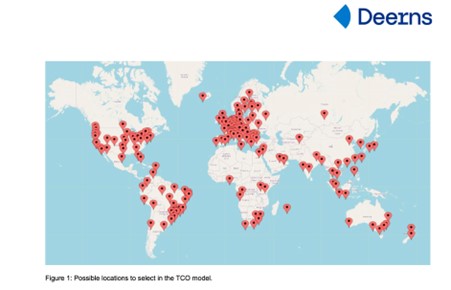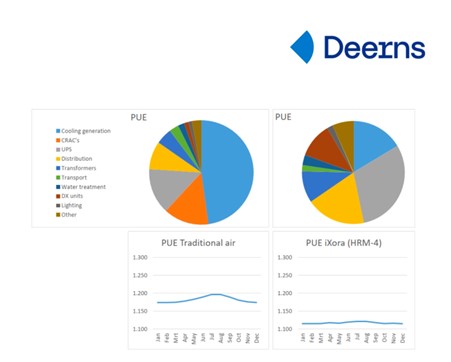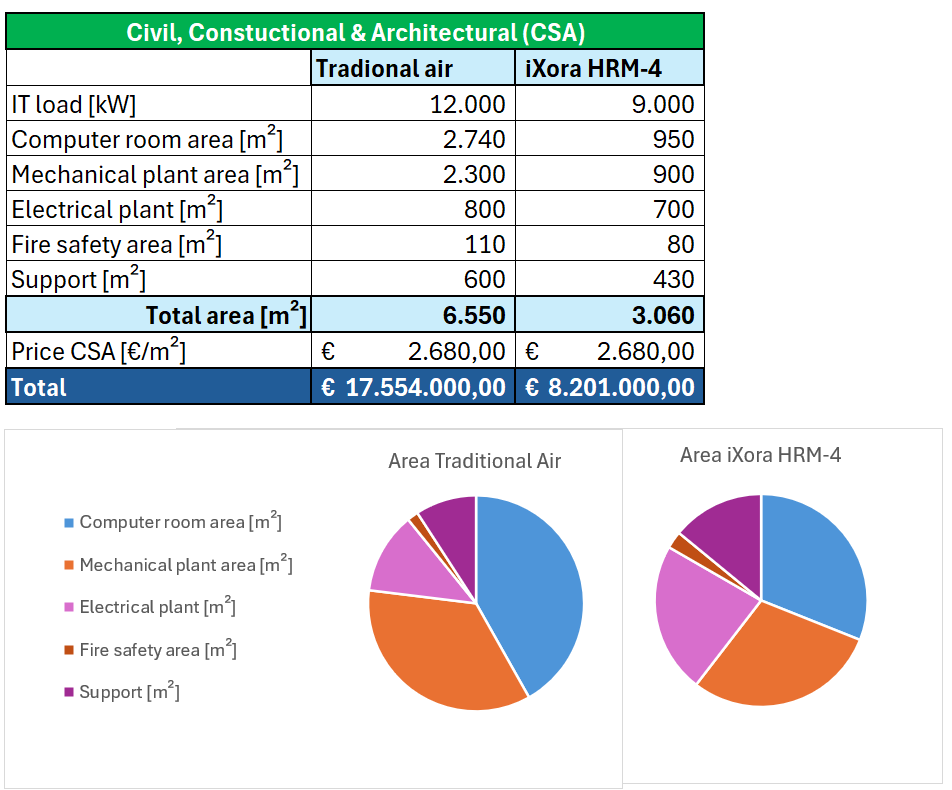Understanding the Total Cost of Ownership (TCO) of iXora’s HRM liquid immersion cooling system is essential for data centers striving to balance operational efficiency with sustainable practices. By highlighting both CAPEX and OPEX savings, iXora’s solution empowers data centers to make informed, economically sound choices that benefit from day one.
Commissioned by iXora, an independent study by Deerns, a global technical consultancy, examined the TCO and Return on Investment (ROI) of iXora’s HRM immersion cooling system in comparison to traditional air-cooled data centers using today’s most efficient available technology.
This comprehensive study considered all aspects of data center construction and operation, covering variables such as land and labor costs across different regions of the world, ensuring that the results are applicable to data centers in virtually any major city. The main report focuses on a case study for a 12 Megawatt, Tier 3+ data center located in Rotterdam, The Netherlands utilizing cooling water temperatures of 30 ⁰C for iXora’s immersion cooling solution.


The study revealed that iXora’s HRM-4 system provides substantial benefits in terms of energy consumption, density, and efficiency:
The iXora system yields significant capital expenditure (CAPEX) savings across multiple dimensions:

Overall CAPEX Summary: When total CAPEX costs are assessed, iXora’s immersion cooling system outperforms traditional air-cooling solutions by a margin of 10%, translating to approximately €16 million in savings within the context of this case study.
The study also highlighted considerable operational expenditure (OPEX) reductions enabled by iXora’s solution:

OPEX Summary: In total, the OPEX for iXora’s solution is significantly lower than for air-cooled alternatives. In the first year, OPEX costs are reduced by 15%, resulting in a savings of €5.7 million. Over a ten-year period, these savings accumulate to an impressive €67.2 million.
All reported data is based on realistic scenarios, without relying on ‘hero numbers.’ Further efficiency gains with iXora’s immersion cooling chassis can easily be achieved by using higher cooling water inlet temperatures than those used in the calculations. With optimized rack dimensions, more compact corridors, and higher computer room temperatures, the efficiency will be even higher.
There is a clear distinction between calculated PUE and realistically achievable PUE in data centers, especially when discussing immersion cooling.
Calculated PUE: This figure is often derived from theoretical models or simulations, assuming ideal conditions. It typically includes:
With proven advantages in both energy efficiency and operational cost reduction, iXora offers an optimized cooling solution tailored for modern data centers. Beyond its financial benefits, iXora’s system supports sustainability goals by improving Power, Water, and Carbon Usage Effectiveness (PUE, WUE, and CUE) metrics, and it also offers the potential for waste heat recovery. Its lower peak power requirements, smaller spatial footprint, and shorter power distribution pathways make it an ideal solution for any data center aiming to reduce costs and environmental impact.
In summary, iXora’s HRM liquid immersion cooling solution represents a smart, future-ready choice for data centers seeking efficiency, cost savings, and alignment with sustainable practices.
If you would like to learn more or request a customized calculation for your specific situation, please don’t hesitate to contact us. Our team is ready to help you explore the full potential of iXora’s immersion cooling solution for your data center.